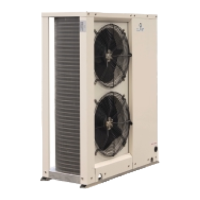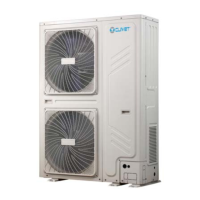56
HIGH PRESSURE SHUTDOWN - COOLING
HIGH PRESSURE SHUTDOWN
Ventilation working
efficientl
?
Check the coil
( 1 )
Outside air temperature
lower than the operating
limits?
Refrigerant charge correct?
Absence of incondensables?
Intake temperature and/or
pressure correct?
Unit working
Check the fan
( 2 )
Check the fan module
3
Check the probe
( 4 )
Check liquid subcooling
( 6 )
Empty and recharge
( 7 )
Check operation
of the indoor unit ( 8 )
Check operation of the
liquid line on-off valve
( 9 )
Check the design data
( 5 )
NO
NO
NO
NO
YES
YES
YE
YES
NO
Notes:
1) The condenser must provide the maximum heat exchange, and as a consequence must be free of dirt, deposits or obstacles
to the flow of air.
2) Check the condition of the fan and replace it if damaged. Check that the fan overload protection (if present) has not been
activated.
3) Check that the voltage output from the board proportionally modulates the fan speed. If not, replace the module.
4) Check the positioning: it must be in close contact with the shaped exchanger coil pipe. The resistance values must be
perfectly in line with the temperature; check the resistance values using a special ohmmeter.
5) Check:
- Operating limits. (see the general section)
- That the coil not is exposed to direct sunlight or placed near reflecting surfaces.
- That there are no hot air streams of any type in the immediate vicinity.
- That the same air is not recirculated.
6) For information on how to perform the checks, please refer to section on START-UP. NB the flooding of the exchanger coil
circuits to the point of the probe socket will cause the anomalous operation of the fan speed controller.
7) One condition that may arise is a very high condensing temperature (25/30 degrees above the air temperature) combined
with low refrigerant efficiency. This may cause the same symptoms as an excessive refrigerant charge. Check the charge and,
if correct, evaluate this possibility and perform all the emptying and charging operations again.
8) Check that the air flow-rate and the ambient air temperature are not too high. These conditions may increase the output of the
machine and consequently the heat to be dispersed by the condenser.
9) Check that all the on-off devices on the liquid line are completely open.
